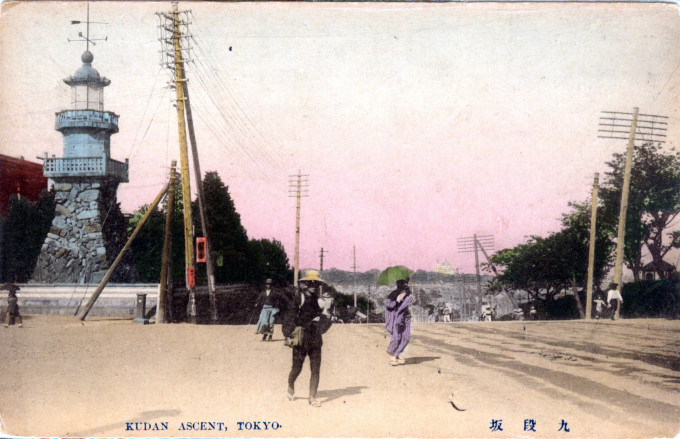
Kudan Ascent, Tokyo, c. 1910. Looking east from the summit, toward Ochanomizu. At left is the toudai (lighthouse) built in 1871. In the distance, faintly right of center, can be seen the dome of the Nikolai Russian Orthodox Cathedral at Ochanomizu.
See also:
Yasukuni Shrine at Kudan, c. 1910
Kaikosha of Kudansakaue, Tokyo, c. 1910.
“A View of a Lighthouse from the Bentenbashi Riverbank”, Yokohama, c. 1910.
“Kudan Hill, with its famous shrine and museum, stands at the northwest corner of the Palace grounds, in Kojimachi-ku, and is one of the most interesting as well as elevated spots in the city. Approaching it along the wide, populous, and upward-sloping Kudan-zaka – the Broadway of Kanda Ward – one reaches the crest of the hill at the Tayasu-mon [gate] of the Palace, where the barracks (the noon gun is fired here) of the Imperial bodyguard is located.
“The bizarre building just across the roadway, with a stone lighthouse in the yard, is a Military Club; the beacon was long a guiding light for the junks which sailed up Yedo Bay. The views over the city from the point are fine.”
– Terry’s Japanese Empire, Including Korea and Formosa, Thomas Philip Terry, 1919
“In the Edo Period, there was a big hill that led up from Iidamachi. Keeping in mind the Yamanote [mountain hand] vs. Shitamachi [low city] geographical dynamic of Tokyo, Iidamchi was a shitamachi town for commoners; the top of the hill was a yamanote area for samurai. Originally, the hill’s name was Iidamachi Nakazaka. The shōgunate built a residence for officials who were working in nearby Edo Castle. The pitch of the hill was so steep that it had to be reinforced with stone walls and nine steps of stairs and the hill came to be called ‘Kudanzaka’, the Nine-Levels Hill.
“After the Restoration in 1868, the daimyo were evicted and all the shōgun’s holdings in Edo were confiscated by the Imperial court. The Edo-era Kudan residences were either demolished or repurposed, and the top of the hill was cleared for the construction of two new important structures.
“The first to be built was Yasukuni Shrine, the national shrine built atop Kudanzaka to enshrine those who had died fighting in service of the emperor during the Boshin War (1868-1869). The second was the tōmyōdai, a lighthouse built in 1871 to help safely guide fishing boats into Tōkyō Bay and to showcase Japan’s growing mastery of foreign technology.”
– From JapanThis!
- Looking east from the summit of Kudanzaka. In the distance can be seen Nikolai Cathedral, c. 1910.
- A streetcar ascends Kudan Hill. At center can be seen the Kaikosha and lighthouse atop Kudanzaka, c. 1910.
- Streetcar ascending Kudan Hill, c. 1910.
- The torii entrance to Yasukuni Shrine at Kudanzaka, c. 1910.


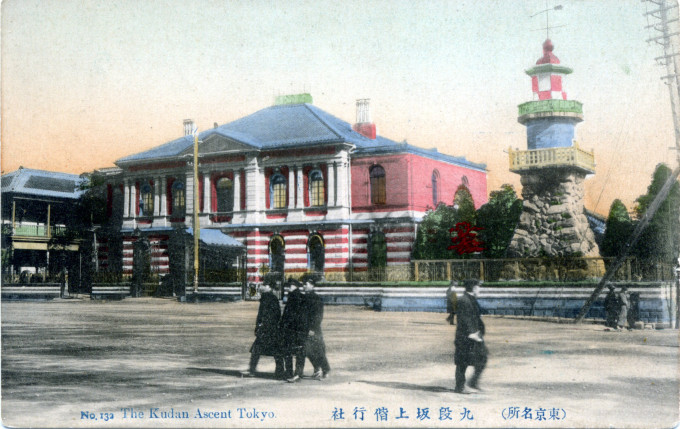
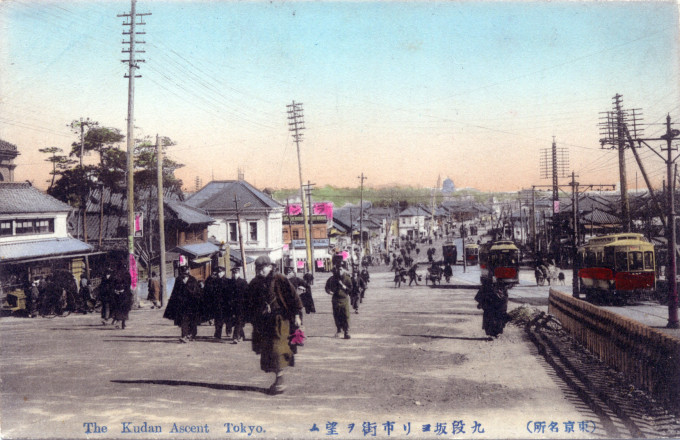
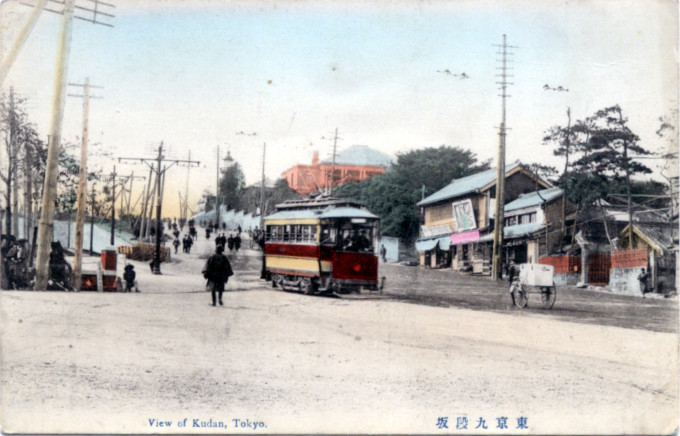
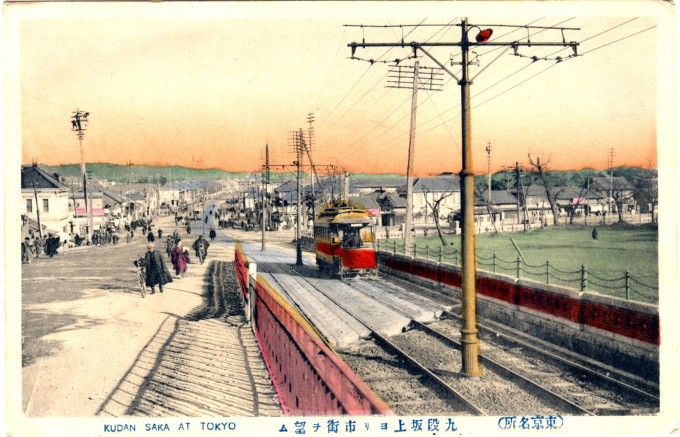
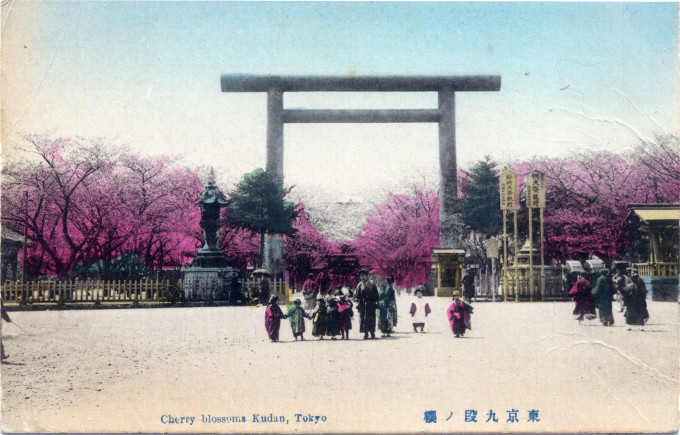
Pingback: Yasukuni Shrine at Kudan, Tokyo, c. 1910 | Old Tokyo
Pingback: Modern Lighthouse, c. 1930. | Old Tokyo
Pingback: Statue of Omura Masujiro at Yasukuni Shrine, Tokyo, c. 1920. | Old Tokyo